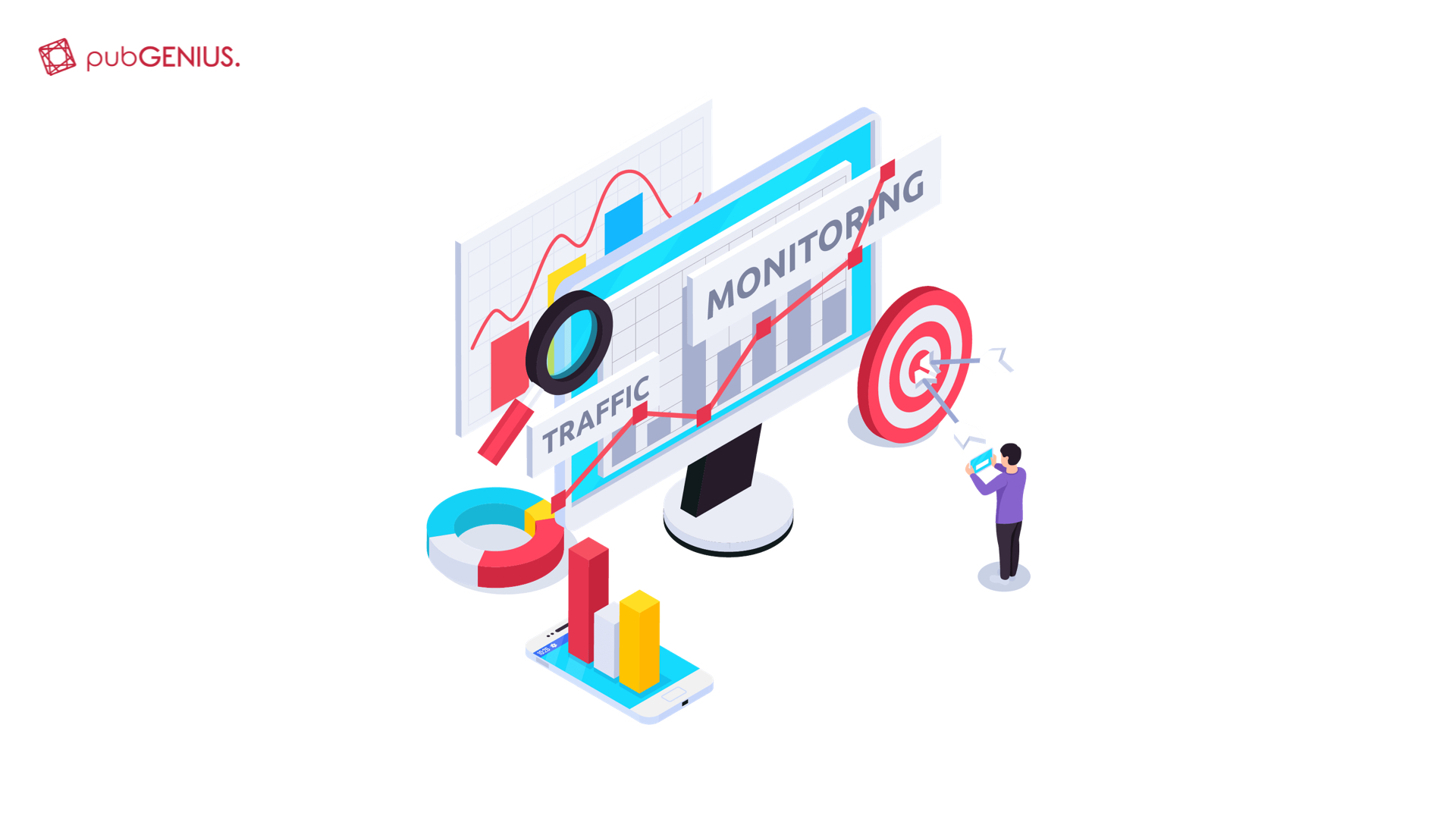Invalid Traffic (IVT) & Ad Fraud - How to Eliminate
June 8, 2021
We already touched on the subject of the invalid traffic (IVT) when talking about shadow banning and how a publisher can prevent shadow ban from advertisers. Even though invalid traffic in the digital ad industry is more of an advertiser’s problem rather than the issue publishers need to worry about, inevitably having IVT identified in connection to your ad inventory can cause a lot of trouble.
So today we are going to talk in more detail about IVT, focusing on the most important information a publisher should know about.
What is invalid traffic (IVT)?

Invalid traffic is the traffic on a publisher’s website that doesn’t meet certain criteria and ad serving quality when it comes to clicks on advertising and ad impressions. Normally, all clicks and impressions that were not made by a real user with genuine interest can be qualified as invalid traffic. This results in sanctions against the publisher such as shadow banning. As well as more traditional and transparent measures like temporary suspension from the platform. Or even a complete ban of publisher’s account by the ad exchange/network.
IVT and ad fraud

Of course, the main problem directly associated with invalid traffic is ad fraud. Even though not all IVT is fraudulent, we will talk about it later. Ad fraud has always been a part of the digital advertising industry, from the very beginning. As the market keeps growing, this problem also becomes bigger. Today ad fraud costs advertisers billions of dollars each year.
Professionals in the advertiser’s side of this business, such as ad agencies and marketing specialists, name ad fraud as the worst aspect of programmatic ad buying (37% of people surveyed by US Advertiser Perceptions named it).
When it comes to estimating how much advertisers are losing due to ad fraud, different research companies shows a significant disparity in figures. A research from anti-fraud vendor White Ops and advertising trade group the Association of National Advertisers (ANA), for example, estimates that advertisers lost $5.8 bln due to ad fraud in 2019, down from $6.5 bln in 2017.
A study by Juniper Research, on the other hand, paints a much darker picture, estimating that advertisers lost around $42 billion of ad spend across online, mobile and in-app channels in 2019. This firm also projects that in 2023 yearly losses will reach the $100 bln mark.
The rates of ad fraud also can be considerably different depending on the country. For example, according to this report by Oracle, Germany has the highest IVT rate for desktop and mobile display advertising. France and Japan are second and third accordingly, while the U.S. is fifth (among the countries that were part of this research), just behind the United Kingdom. When it comes to video advertising, France, Germany and Japan are the trio of leaders in invalid traffic rates.
Types of IVT

So as you can see, ad fraud is a major problem, and advertisers have all the reasons to be worried when they identify invalid traffic in their ad clicks and impressions.
But even though IVT is directly tied to ad fraud, these two are not equivalent to each other. There are different kinds of invalid traffic and not all of it can and should be qualified as fraudulent. Non-human ad impressions can be caused by search engine bots and other web crawlers.
This is why in 2015 the Media Rating Council (MRC) proposed to separate IVT into two mutually exclusive sub-categories, which would make it easier for advertisers and other industry players to tell the fraudulent and legitimate invalid traffic apart.
-
General Invalid Traffic (GIVT)
GIVT is the “good” kind of invalid traffic that is generated by legitimate bots and crawlers, as well as proxy traffic coming through virtual private networks (VPN). Generally speaking, it is all automatic traffic that doesn’t attempt to mimic human user behavior. Therefore, it is not considered to be fraudulent and typically can be filtered with standard ad platform tools and settings.
GIVT is not totally harmless, however. It can mess up audience measurement data, with spikes in traffic that are not caused by real users.
-
Sophisticated Invalid Traffic (SIVT)
As the name says, SIVT includes all kinds of more sophisticated traffic that is harder to get identified. Not all of it is strictly fraudulent, but all invalid traffic causing ad fraud falls into this category. The identification of this type of traffic normally requires additional sophisticated instruments, as the methods and approaches in using SIVT for ad fraud constantly change to avoid detection.
Types of fraudulent SIVT
- Adware
- Malware
- Bots and web spiders mimicking human behavior
- Ad stacking (several ad stacked upon each other to mislead advertisers)
- Intrusive ad implementations
- Invalid proxy traffic
- Cookie stuffing
- Incentivized promotional traffic
Typically, fraudsters use a combination of these methods to achieve the best results in generating fake ad clicks/impressions and evade detection.
How to find and eliminate fraudulent IVT on your website

Detecting and eliminating the sophisticated invalid traffic on your web properties can be tricky. But it is exactly what publishers should do in order to protect themselves from banning, account suspensions and other ad fraud punishments by ad networks and exchanges.
Here are a few recommendations on how to do this.
-
Use analytical tools to identify the IVT origin point.
Using specialized tools for detecting and blocking invalid traffic is highly advisable. Being able to identify the origin point of the traffic is crucial to stopping it. But that would normally take some digging into analytical reports.
-
Review and strictly select your third-party traffic sources.
If using third-party paid traffic sources is your choice, chances of IVT would be considerably higher. This is why it’s important to review these sources closely and only select those that provide you with high-quality traffic.
-
Communicate with ad exchange and/or your other ad tech partners.
If you detected some invalid traffic, it makes sense to contact the platform you are using to sell ad inventory. They can help in identifying and preventing anomalies in traffic.
-
Don’t always trust anti-fraud tools and traffic inspection solutions.
Anti-fraud tools can also be wrong, and you should keep that in mind. Sometimes they paint genuine human traffic as invalid if the source of this traffic couldn’t be identified.
-
Maintain high quality of your ad inventory.
Maintaining high quality of your ad inventory with high viewability and other important parameters well in order, also helps to both detect IVT and eliminate it easier. Properly classifying the inventory by media type has shown to reduce the percentage of bot traffic compared to unclassified inventory.
Final recommendation

Seems like a lot of stuff to keep track and take care of? It kind of is. As our final suggestion, you can just outsource all this work to professionals in this field and focus on your core value-driving activities, which is what smart entrepreneurs always do.
What’s extremely convenient, you don’t need to search for professionals to intrust your valuable web properties to. That’s us! pubGENIUS’ ad ops specialists are well-versed in the best practices and trends of the industry. We can take care of the invalid traffic issue and make sure that your ad inventory is set up and operating with maximum capacity at all times.
Get in touch with pubGENIUS Team to get free consultation 🙂
